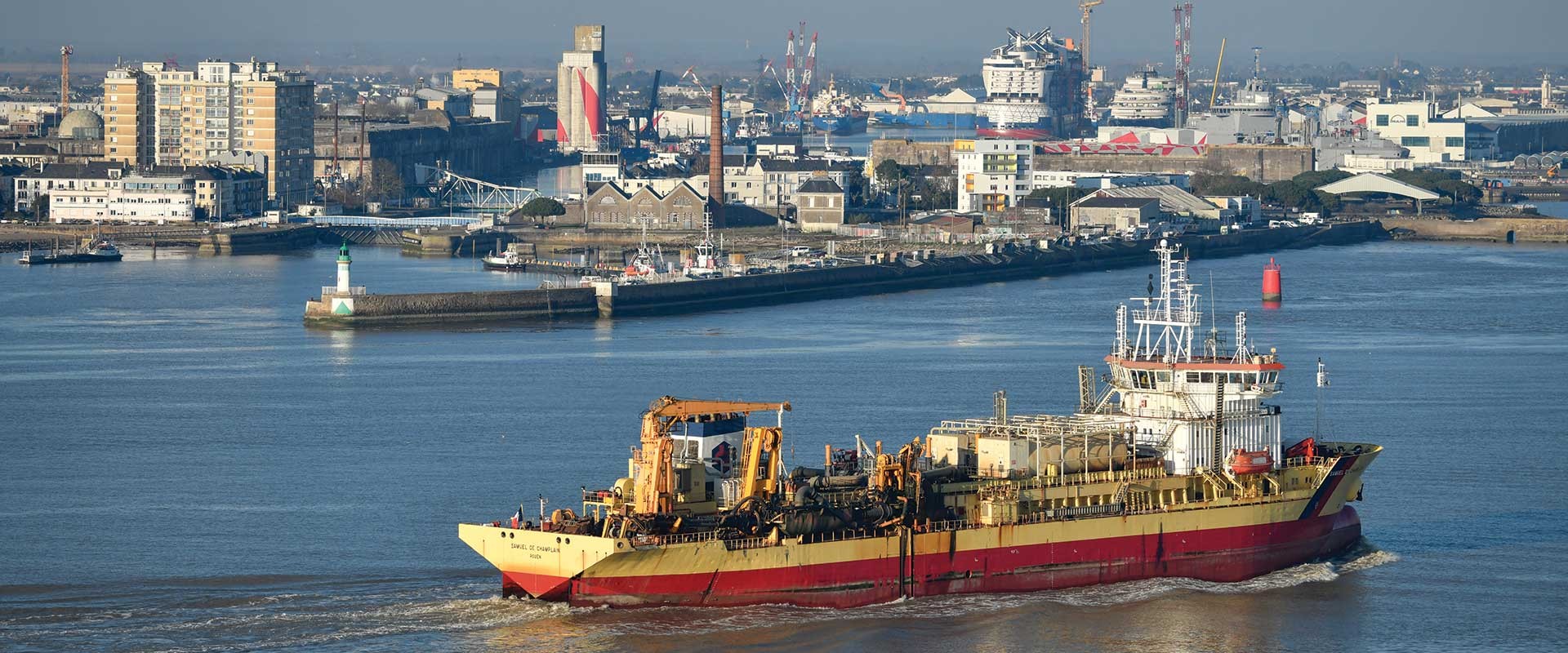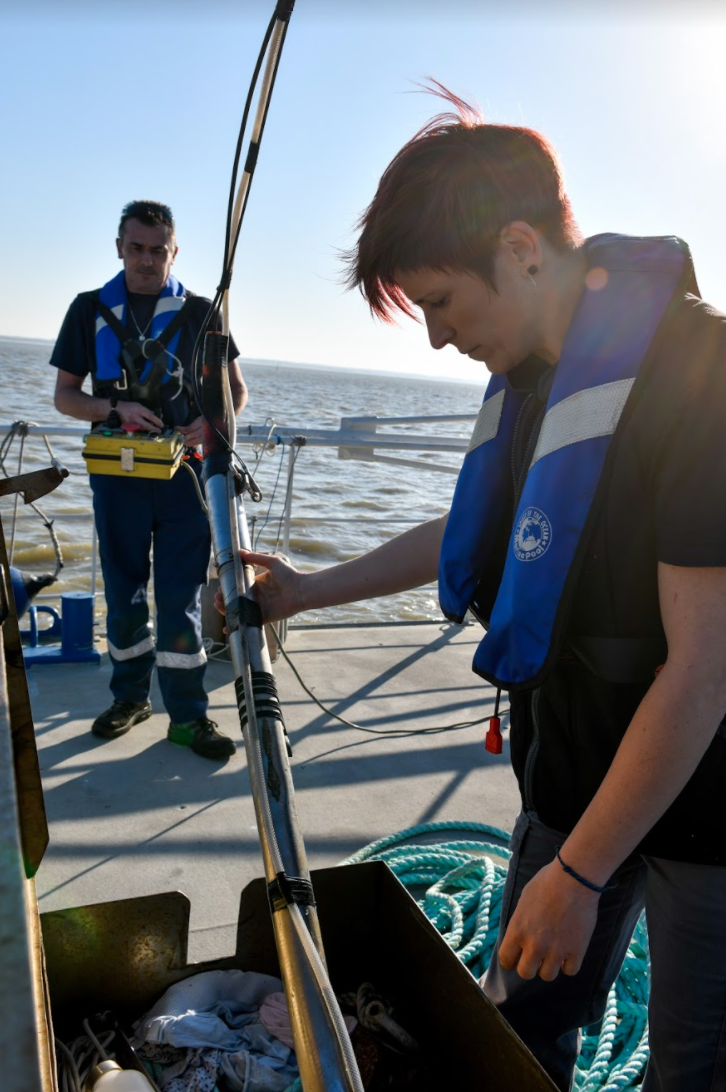
Dredging Operations
Nantes − Saint Nazaire Port manages the navigation on the Loire Estuary, from the mouth of the Estuary as far as the Île de Nantes district of the City of Nantes. So as to ensure that the nautical accesses are properly maintained, dredging work is carried out on certain sections of the River Loire, including the shipping channel, the turning zones, and the quayside trenches that permit vessels to operate in changing tidal conditions.
Receiving Vessels in a Protected Marine Environment
Nantes − Saint Nazaire Port manages the navigation on the Loire Estuary, from the mouth of the Estuary as far as the Île de Nantes district of the City of Nantes. In order to maintain the nautical accesses, dredging work is carried out on certain sections of the River Loire, including the shipping channel, the turning zones, and the quayside trenches that enable vessels to adapt to the prevailing tidal range.
This practice is subject to an environmental authorization for maintenance dredging operations and for the disposal of dredged materials at the La Lambarde disposal zone or in the Loire Estuary, pursuant to a Loire Atlantique and Vendée Inter-Prefectural Authority Order published on 27th December 2024 and applying for a period of 10 years.
As part of this process, a large number of environmental monitoring operations must be carried out in the Loire Estuary and in the disposal zones, and the findings shared within the framework of a technical monitoring committee possessing the necessary technical and scientific expertise. Some of this monitoring is aimed at assessing the effects of dredging on biodiversity. In this way, Nantes − Saint Nazaire Port is committed to studying and analysing the interaction between the disposal operations and the presence of certain birds, such as the Balearic shearwater, in the La Lambarde disposal zone. In addition, another study is designed to provide more precise data regarding the number of fish present in the Estuary, particularly elvers. Certain environmental monitoring operations are more concerned with the quality of the dredged materials, such as a campaign to sample and analyse emerging pollutants (pharmaceutical compounds, endocrine and metabolic disruptors), which will be carried out in 2026 at several stations between the Loire Estuary and the La Lambarde disposal zone.
Nantes − Saint Nazaire Port has a dredging management plan, a strategic tool for the integrated management of dredging operations, which takes into account the environmental issues in the geographical area concerned. This reference document provides a framework for dredging practices, setting environmental objectives and defining and planning the actions to be implemented to achieve those objectives. An operational dredging management plan is based on this document and is updated at least once every five years, depending on changes in environmental monitoring measures, dredging practices or sediment management methods, or even changes to the applicable regulations.
Over the course of the past ten years, the average annual volume of dredged materials for the entire Loire Estuary is approximately 5.2 million m3.
